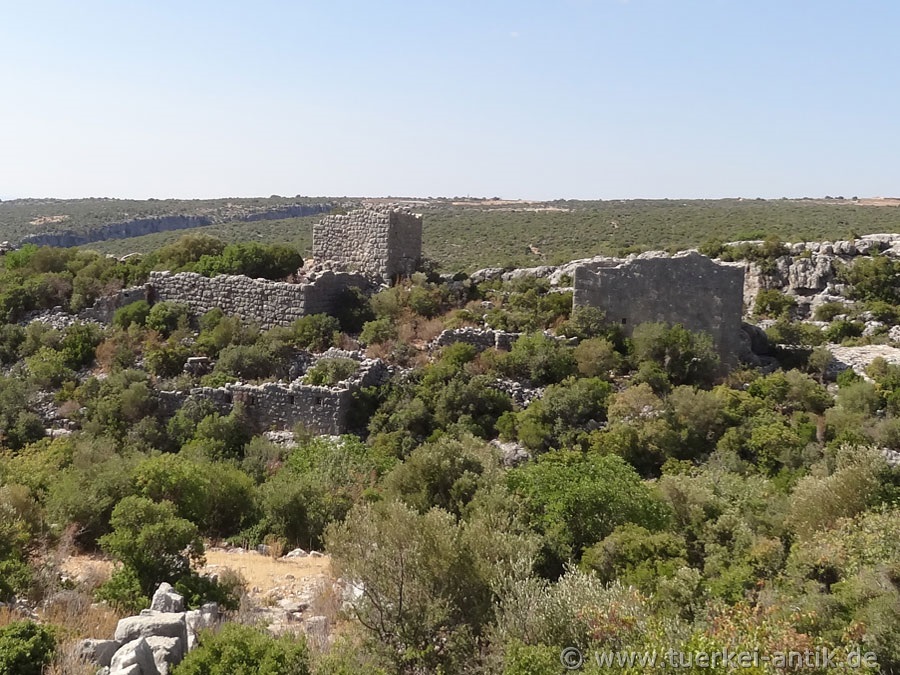 |
| The history of Çatıören |
 |
|
|
|
||
 |
|
|
|
Çatıören is the Turkish name for a ruin site from the Hellenistic-Roman Early Byzantine period in Rauen Kilikien in southern Turkey. The settlement remains are located in the mountainous hinterland of Ayaş, the ancient Elaiussa Sebaste, six kilometres from the Mediterranean Sea, on the road leading from Ayaş via Kızılbağ and Emirzeli to Sömek, Cambazlı and on to Olba and Diokaisareia. The oldest buildings of the place are dated into the 3rd to 2nd century BC, the temple according to the inscriptions into about the 2nd to 1st century BC. Similarly simple temple buildings are otherwise not known from South Anatolia. Traces of a Byzantine rededication were not found, possibly because the building was not architecturally suitable for it. Southeast of the temple stands an Olbian tower on the rock, also in polygonal construction, with a similar wall facing northeast. Below this there are several houses of the same construction, as well as on the southern and eastern slopes of the Sporns and in the surrounding valley. The ruins of a three-nave basilica with galleries and a choir gallery stand on the opposite slope to the northeast, on the road. Its naves are separated by a series of five or six columns whose shafts and bases are located inside. Overhanging parallelepipeds at the northern corner of the west wall indicate that the construction of a narthex was planned. An angle of the wall at the southwest corner slightly off the south wall could have been intended as a foundation for this porch. |
||
| Photo: @chim | ||
|
Translation aid: www.DeepL.com/Translator |
||
| Source: Wikipedia and others |
|
|
